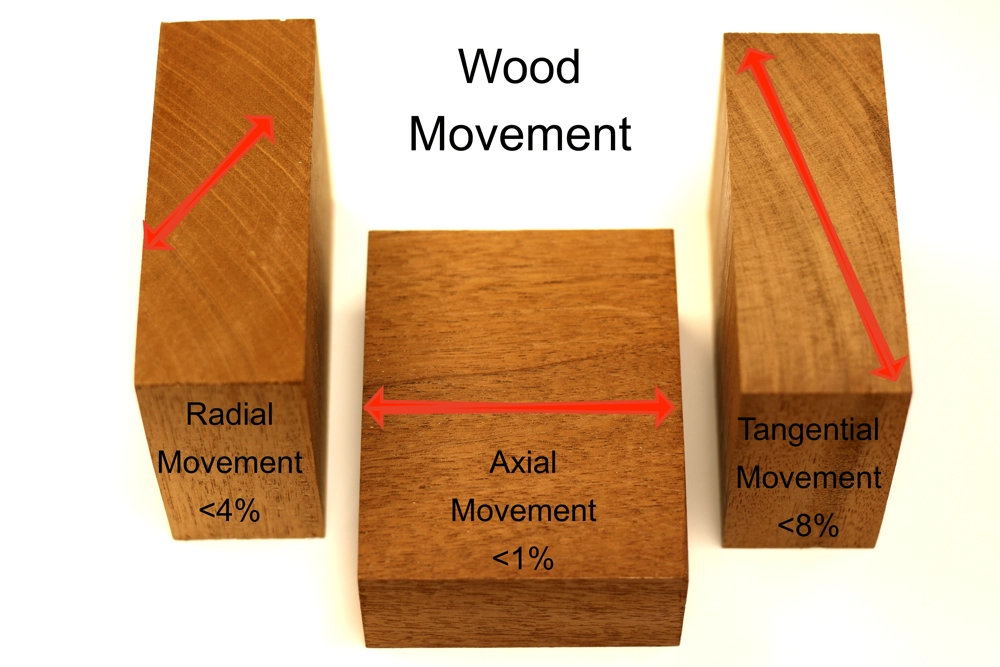In theory, if one piece of wood was to move at a rate significantly greater than the piece it was glued to, we assume that something would have to give. If the woods are flexible enough, there may be no failure. If not, either the glue joint will fail or, worse, there will be cracking or splitting.
Conventional thinking has maintained that, in order to mitigate future splitting, it is critical to align the grain direction of two mating wooden components. Since we have established that any piece of wood is going to move (contract or expand) more across its grain than along its grain, a second piece joined to it should be aligned to move in the same direction.
Countless neck and tail blocks have been glued to sides in accordance with this thinking. It is a bit simplistic to assume that these components, when glued together, actually move together in response to changes in moisture content. Stop long enough to consider that all of these wooden components have been cut from different trees, different species, all having differing moisture content, and thus have differing propensity for movement (movement which, by the way, is rather minuscule when considering the dimensions we are dealing with).
Technically, flat sawn (tangential) sides have a greater propensity for movement than do quarter sawn (radial) sides, yet I am unaware of any special considerations being made when orienting end blocks for attachment.
Neck and tail blocks don't typically crack unless a severe force is applied to them. When the sides split on your {enter favorite vintage guitar model, here}, please note how painstakingly aligned the grain direction of the end blocks were with the sides, and yet the sides split anyway! Were they flat or quarter sawn? Which species are more prone to splitting, and why? What was the aged condition of the sides prior to construction (in other words, how far along toward perfectly dried was the wood when the instrument was first assembled)? How thin were those sides prior to being finished? I submit that these are more significant questions than, "How do I align grain direction of end blocks?"
Wood was once a living tree. Having been cut from the tree, the oils, resins and lignin deep within the walls of the woods cells can take a lifetime to fully dry. During such time, that wood will continue to expand and contract based on its ability to absorb and release the moisture it is exposed to. But once the wood is fully dried and the lignin has crystallized, such wood will no longer take on moisture. Wood that doesn't take on moisture has no moisture to release. Wood that is no longer taking on and/or releasing moisture is NOT moving in response to changing humidity levels.
This issue of wood movement was of much greater concern back before wood was kiln dried and when glues were entirely dependent on wood mating techniques for bond strength. Modern kilns, torrifaction, laminations and glues such as epoxies can pretty much nullify the argument surrounding the proper alignment of grain direction, if you are willing to participate. Or don't, and continue to deal with the natural movement of wood.














